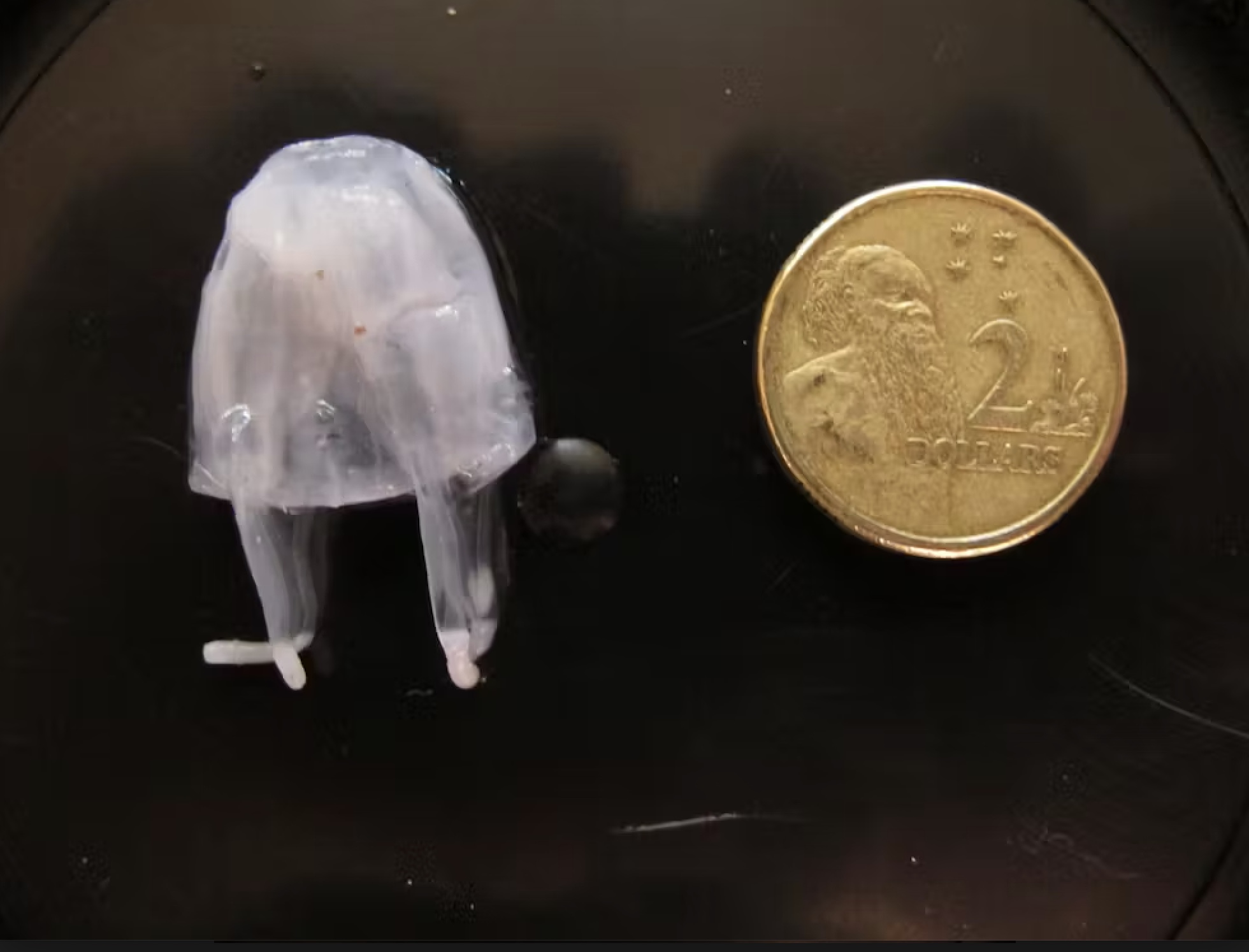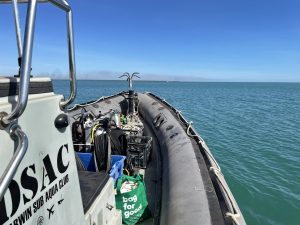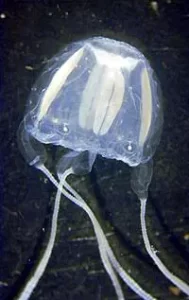
Introduction
Diving in the waters of Darwin, Australia offers a unique blend of adventure and history, where each dive can unveil secrets hidden beneath the waves. On a recent dive expedition to the shipwreck ‘Booya,’ my group was not only immersed in the fascinating history of this maritime relic but also confronted with the lurking dangers of the ocean, specifically the venomous Irukandji jellyfish. In this blog post, i will take you on our underwater journey, sharing stories of the shipwreck and crucial insights about the Irukandji jellyfish and how to respond if you ever encounter one.

Darwin Sub Aqua Club: Photo by Mark Tozer
Unearthing the ‘Booya’ Shipwreck
The Booya shipwreck is more than just a collection of submerged metal; it is a solemn memorial to those who met their fate during one of the most devastating natural disasters in Australian history. Cyclone Tracy struck Darwin on 24 December 1974, leaving chaos and destruction in its wake. In the face of the impending tempest, many ships left the port to avoid the storm’s fury, and the Booya was among them.
Onboard the Booya was 63-year-old skipper Terence Westwood, three crewmen, and a passenger named Ruth Vincent. Tragically, none of them were ever seen again. According to official police records, 16 people lost their lives at sea during the catastrophic Cyclone Tracy, and for nearly three decades, the fate of the five souls aboard the Booya remained a mystery.

Booya
The Booya’s remains lay undiscovered beneath the ocean’s surface until October 2003 when four recreational divers stumbled upon the shipwreck. The Booya rests on its side in 20 meters of water below a busy shipping lane in Darwin Harbor. It is now a protected shipwreck under the Northern Territory’s Heritage Conservation Act 1991, serving as a poignant memorial to all those who perished during Cyclone Tracy.
The Lurking Danger: Irukandji Jellyfish
My dive expedition, which started as a quest to explore history, took an unexpected turn when my dive buddy was stung by an Irukandji jellyfish. These minuscule, yet extremely venomous creatures are native to the northern marine waters of Australia. The Irukandji jellyfish is one of the smallest and most venomous jellyfish species globally, with an adult size of just about one centimeter.

Irukandji jellyfish
Understanding the Irukandji Jellyfish
The Irukandji jellyfish are members of an enigmatic and rare jellyfish family. They possess a unique method of reproduction through the union of eggs and sperm. When provoked, they can fire their stingers into their victims, causing a condition known as Irukandji syndrome.
Irukandji syndrome was first named in 1952 by Hugo Flecker, who described the symptoms of envenomation by these jellyfish. It was named after the Irukandji people, whose territory spans the coastal region north of Cairns, Queensland. Jack Barnes identified the first of these jellyfish, Carukia barnesi, in 1964. To confirm that it caused Irukandji syndrome, he bravely allowed the tiny jellyfish to sting him, his nine-year-old son, and a lifeguard. All three suffered severe illness but ultimately survived.
Irukandji jellyfish have the remarkable ability to fire their stingers from the tips of their tentacles and inject venom. Their stings are not exceptionally painful but can lead to severe symptoms that, if left untreated, can be fatal.
Responding to an Irukandji Jellyfish Sting
If you or someone you’re diving with encounters an Irukandji jellyfish, it is crucial to act swiftly:
1. Get out of the water immediately to ensure safety.
2. If the person is unconscious, perform cardiopulmonary resuscitation (CPR).
3. Pour vinegar on the jellyfish stings for 30 seconds. This helps prevent any unfired tentacles from releasing more venom. If vinegar is unavailable, rinse the stings with seawater.
4. Carefully remove the tentacles from the skin using a stick or your fingers (if wearing gloves). Rinse the affected area with seawater. Be cautious, as this process may cause minor stinging.
5. Use a cold pack to alleviate pain after treating the sting with vinegar.
6. Transport the injured person to the hospital. Further medical treatment may be necessary, such as antivenom, strong pain relief, or heart monitoring.
Avoid using fresh water on the sting, as it can cause more venom to be released. Refrain from rubbing the sting site.
Conclusion
Our dive to the ‘Booya’ shipwreck in Darwin took us on a historical journey, reminding us of the lives lost during Cyclone Tracy in 1974. It is a place of reverence, offering tribute to the souls who never returned from that fateful voyage.
Yet, even in the most serene and intriguing underwater environments, unexpected dangers can arise. The Irukandji jellyfish, with its potent venom, underscores the importance of staying informed about marine life and being prepared for any encounters. Divers and sea enthusiasts must recognize the risks and understand how to respond to Irukandji jellyfish stings, just as we did during our dive expedition to the ‘Booya’ shipwreck. The ocean is an enigmatic world waiting to be explored, but respect for its inhabitants and responsible diving practices are paramount to ensuring a safe and fulfilling adventure.
Disclaimer
The medical advice provided here is based on my personal ideas and opinions. It is imperative to consult with emergency responders or qualified medical professionals before taking any actions or making decisions related to health and safety. Your health and well-being are of paramount importance, and professional guidance should always be sought in emergency situations. First aid information comes from www.healthdirect.gov.au
Mark Tozer


Thank you Mark for your calmness and management of the situation including the practical application of first aid.